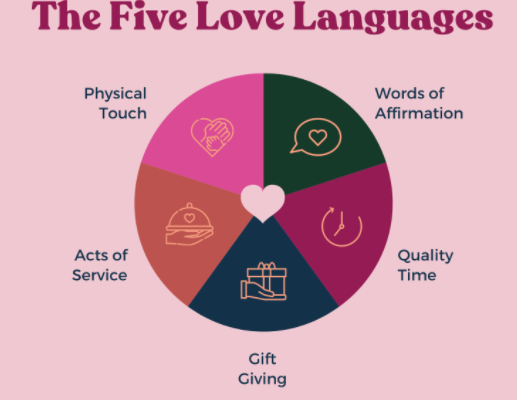The Five Love Languages: Understanding How We Give and Receive Love
The concept of “love languages” comes from the book “The 5 Love Languages” by Gary Chapman, published in 1992. It proposes that people primarily experience and express love in five different ways. Understanding these languages can be very helpful in navigating relationships of all kinds, romantic or otherwise.
Here’s a breakdown of the five love languages:
1. Words of Affirmation:
- People with this language feel loved through verbal expressions of affection, appreciation, and encouragement.
- Examples: Compliments, words of support, verbal expressions of love and gratitude.
2. Quality Time:
- These individuals feel loved when their partner gives them their undivided attention. It’s about focusing on being present and engaged with each other, free from distractions.
- Examples: Uninterrupted conversations, shared activities, date nights, simply spending time together.

3. Physical Touch:
- For those with this language, physical affection is crucial for feeling loved. This can range from holding hands and cuddling to more intimate forms of touch.
- Examples: Hugs, kisses, holding hands, back rubs, any form of affectionate touch.
4. Acts of Service:
- Actions speak louder than words for these individuals. They feel loved when their partner does things to make their life easier and show they care.
- Examples: Running errands, doing chores, making coffee, offering help without being asked.
5. Receiving Gifts:
- People with this language interpret gifts as symbols of love, thoughtfulness, and effort. It’s not about the material value, but the sentiment behind it.
- Examples: Presents chosen with thought, small tokens of affection, homemade gifts, anything that conveys “I was thinking of you.”
Important Points:
- Everyone has a primary and secondary love language, but we can appreciate all five to some degree.
- Understanding your own and your partner’s love languages can greatly improve communication and strengthen your bond.
- Love languages are not rigid categories, and individual expressions can vary within each language.
- This is a simplification of complex human emotions, and it’s crucial to maintain open communication and understanding in any relationship.
Additional Resources:
- The 5 Love Languages website: https://5lovelanguages.com/
- Book: “The 5 Love Languages” by Gary Chapman
- Online quizzes: Numerous quizzes are available online to help you identify your primary love language.
I hope this comprehensive explanation gives you a good understanding of the five love languages!
